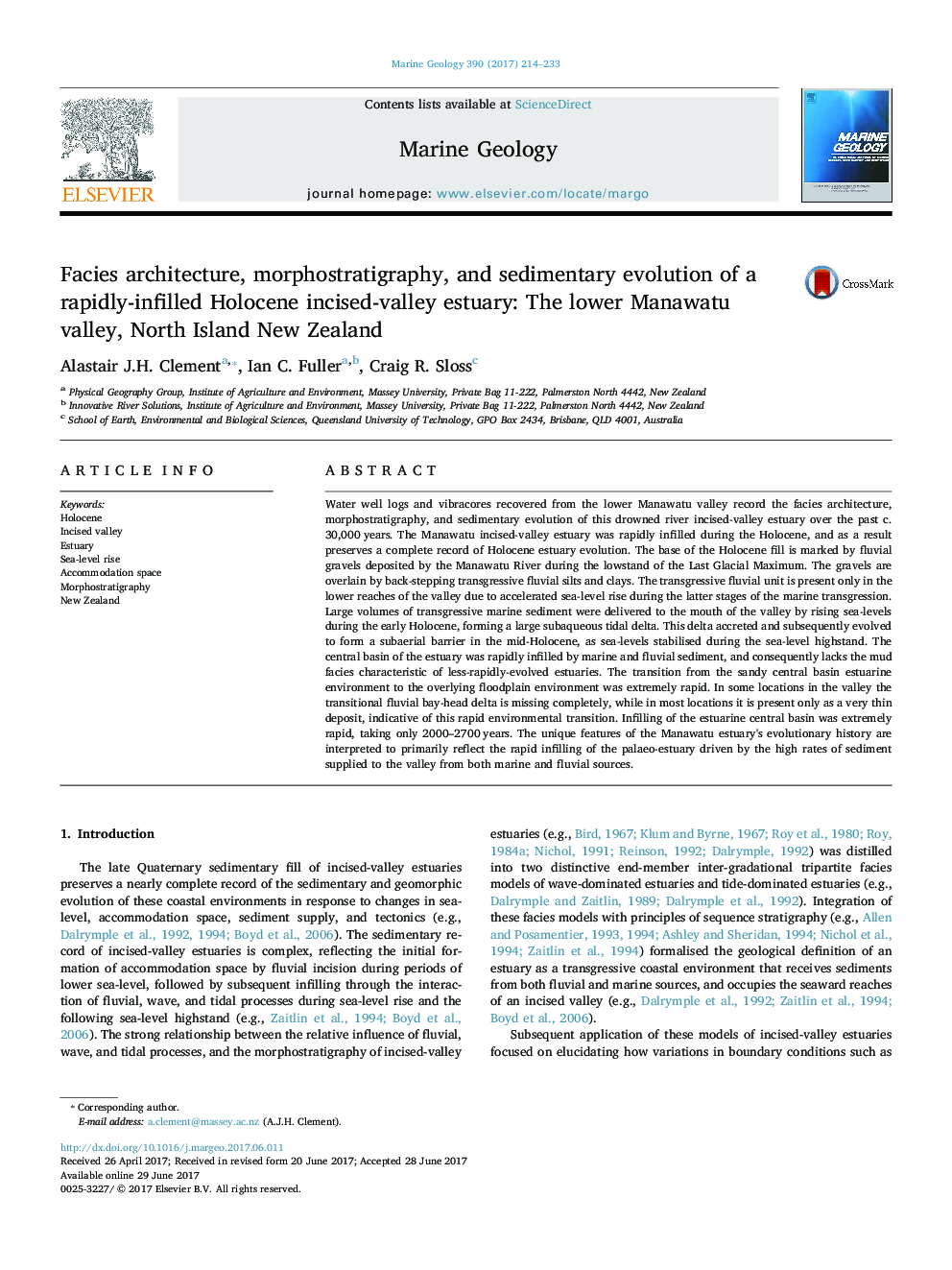| کد مقاله | کد نشریه | سال انتشار | مقاله انگلیسی | نسخه تمام متن |
|---|---|---|---|---|
| 5784374 | 1639062 | 2017 | 20 صفحه PDF | دانلود رایگان |
عنوان انگلیسی مقاله ISI
Facies architecture, morphostratigraphy, and sedimentary evolution of a rapidly-infilled Holocene incised-valley estuary: The lower Manawatu valley, North Island New Zealand
دانلود مقاله + سفارش ترجمه
دانلود مقاله ISI انگلیسی
رایگان برای ایرانیان
کلمات کلیدی
موضوعات مرتبط
مهندسی و علوم پایه
علوم زمین و سیارات
ژئوشیمی و پترولوژی
پیش نمایش صفحه اول مقاله

چکیده انگلیسی
Water well logs and vibracores recovered from the lower Manawatu valley record the facies architecture, morphostratigraphy, and sedimentary evolution of this drowned river incised-valley estuary over the past c. 30,000Â years. The Manawatu incised-valley estuary was rapidly infilled during the Holocene, and as a result preserves a complete record of Holocene estuary evolution. The base of the Holocene fill is marked by fluvial gravels deposited by the Manawatu River during the lowstand of the Last Glacial Maximum. The gravels are overlain by back-stepping transgressive fluvial silts and clays. The transgressive fluvial unit is present only in the lower reaches of the valley due to accelerated sea-level rise during the latter stages of the marine transgression. Large volumes of transgressive marine sediment were delivered to the mouth of the valley by rising sea-levels during the early Holocene, forming a large subaqueous tidal delta. This delta accreted and subsequently evolved to form a subaerial barrier in the mid-Holocene, as sea-levels stabilised during the sea-level highstand. The central basin of the estuary was rapidly infilled by marine and fluvial sediment, and consequently lacks the mud facies characteristic of less-rapidly-evolved estuaries. The transition from the sandy central basin estuarine environment to the overlying floodplain environment was extremely rapid. In some locations in the valley the transitional fluvial bay-head delta is missing completely, while in most locations it is present only as a very thin deposit, indicative of this rapid environmental transition. Infilling of the estuarine central basin was extremely rapid, taking only 2000-2700Â years. The unique features of the Manawatu estuary's evolutionary history are interpreted to primarily reflect the rapid infilling of the palaeo-estuary driven by the high rates of sediment supplied to the valley from both marine and fluvial sources.
ناشر
Database: Elsevier - ScienceDirect (ساینس دایرکت)
Journal: Marine Geology - Volume 390, 1 August 2017, Pages 214-233
Journal: Marine Geology - Volume 390, 1 August 2017, Pages 214-233
نویسندگان
Alastair J.H. Clement, Ian C. Fuller, Craig R. Sloss,